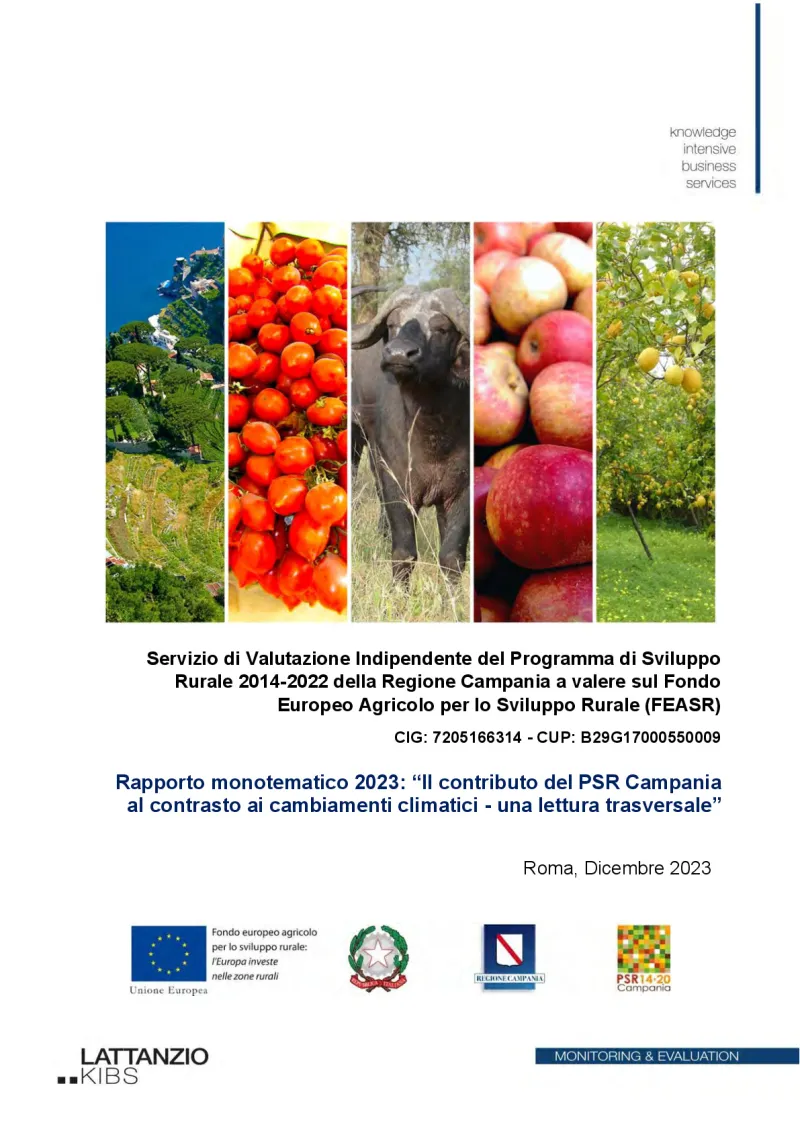The contribution of the Campania RDP towards climate change
The thematic report focuses on the analysis of the effectiveness of greenhouse gas emission reductions achieved by the Rural Development Programme (RDP).
- Italy
- 2014-2022
- Environmental impacts

The thematic evaluation report is conducted within the framework of the independent evaluation service for the Campania 2014-2022 RDP and covers the implementation period up to 2022.
The thematic report, published in 2023, assesses the RDP’s contribution to the CAP objective related to climate change, focusing on the analysis of the effectiveness of the support in achieving overall greenhouse gas emission reductions through a cross-cutting analysis.
A quantitative approach was used to estimate the overall greenhouse gas (GHG) emission reductions achieved by the RDP, considering both direct reductions (nitrous oxide sequestration from soils) and CO2 reductions from renewable energy sources (RES) and energy efficiency, as well as indirect emission reductions.
The counterfactual technique was used to estimate the emissions (direct and indirect) of agri-environmental measures (M10.1 and M11). Indirect emissions are calculated using the carbon footprint (CFP) tool, which employs a life cycle assessment (LCA) approach.
The reduction of GHG emissions is determined by RES energy production measures using a life cycle assessment (LCA) approach (M7.2.2, 4.1.1, 4.1.2, 4.2.1,) through the 'COMPARE' model. Data sources include direct surveys involving two samples of beneficiaries and a study case, as well as monitoring data, statistical data and data from the international scientific literature.
The main results of the analysis are as follows Overall, the two measures, organic and integrated (M10.1, M11), result in a regional reduction in indirect GHG emissions of 40 330 Mg CO2eq, of which 24 565 is due to organic and 15 765 from integrated.
The largest absolute differences in emissions compared to the conventional technique are found for tomato, grapevine and tree crops in general.
The operations aimed at improving the competitiveness of beneficiary farms and agro-industrial enterprises (Measure 4.1 and 4.2) represent the predominant part of the interventions with energy purposes within the Campania RDP, both in terms of project numbers and investment activities. Considering the reduction of emissions per euro invested, the most efficient investments are those for biomass power plants, with a reduction of 37.15 kg CO2 per euro invested.
Author(s)
LATTANZIO KIBS